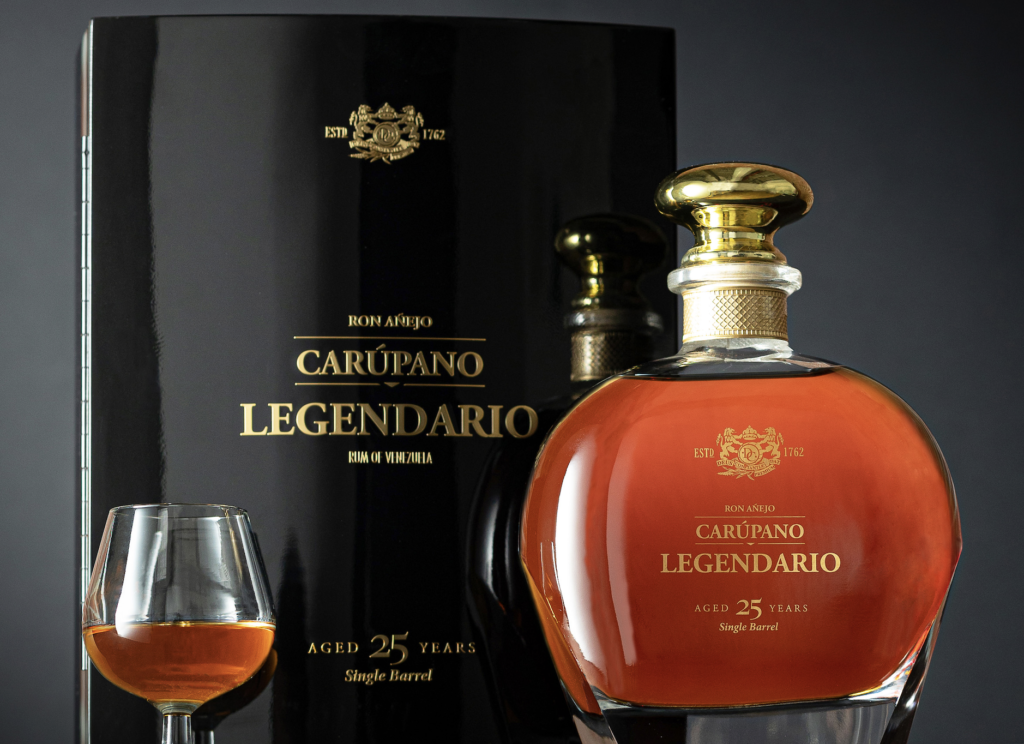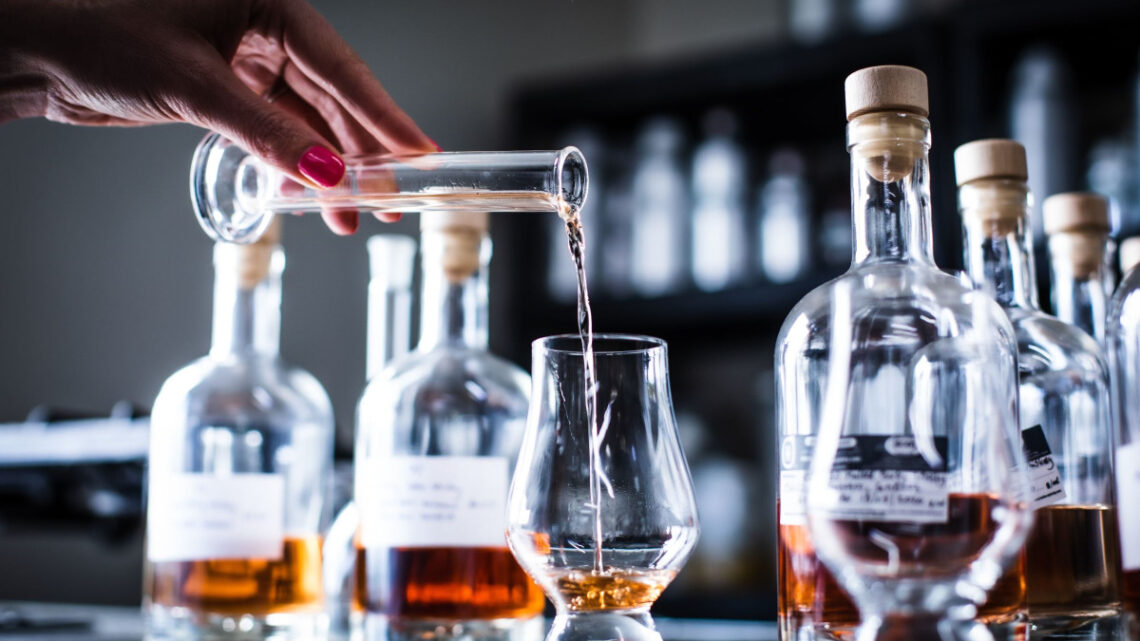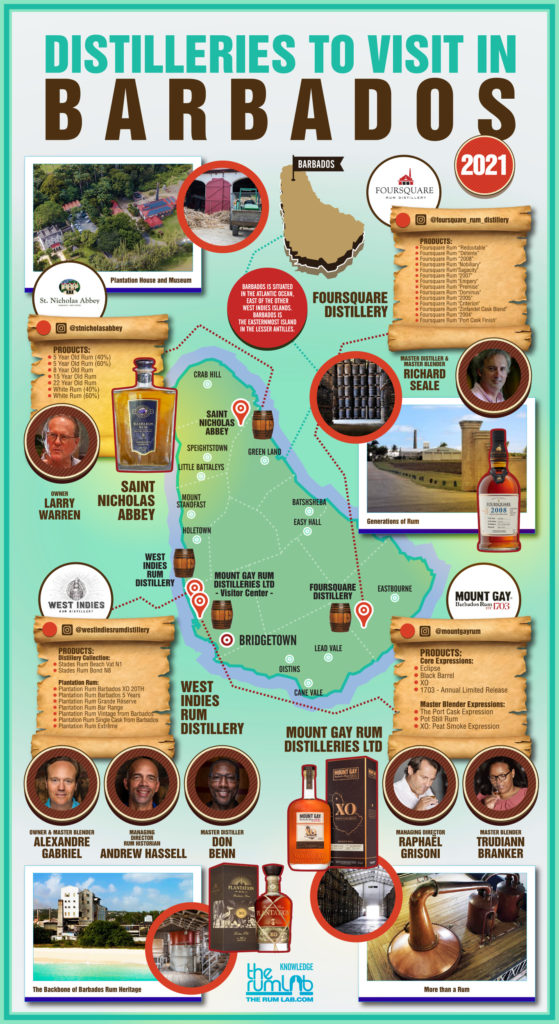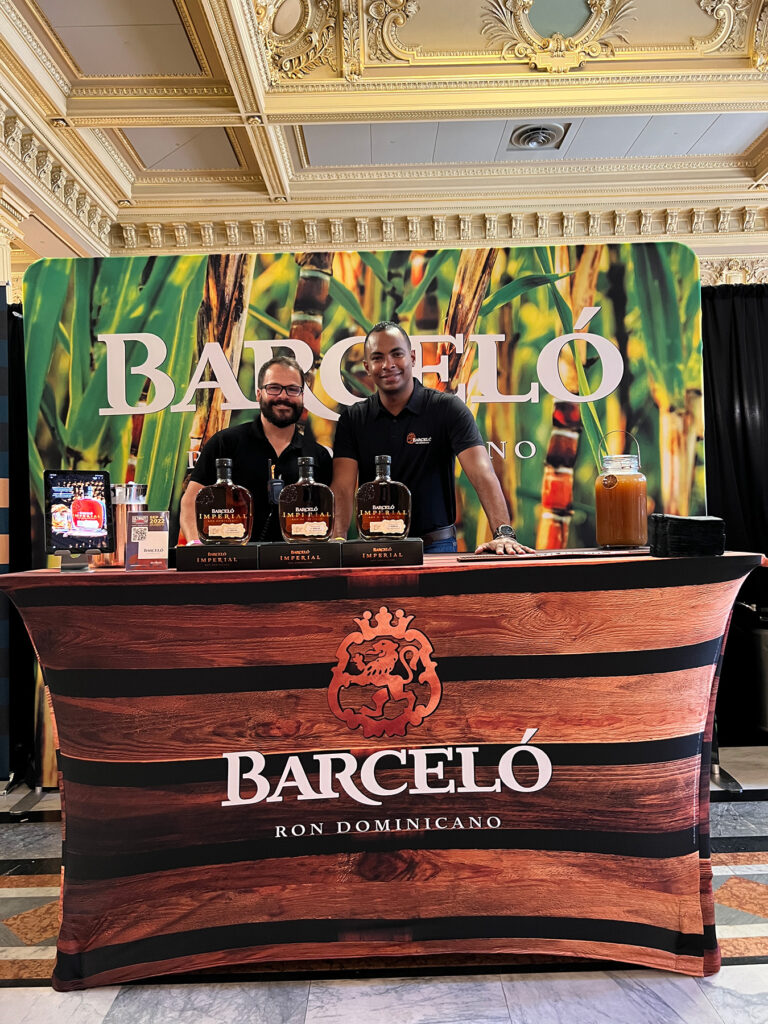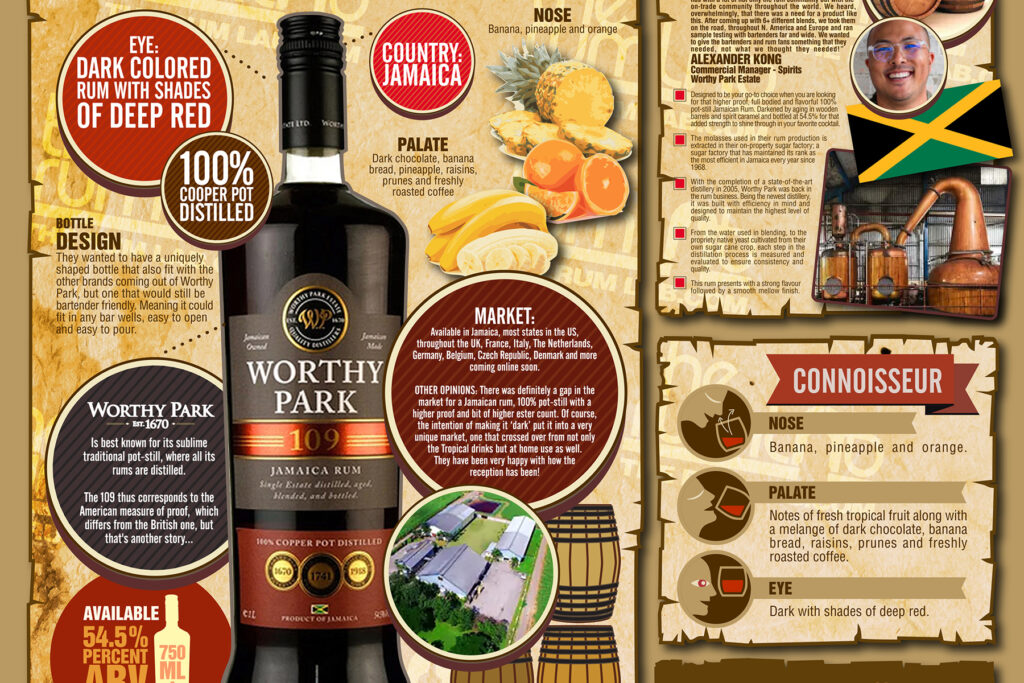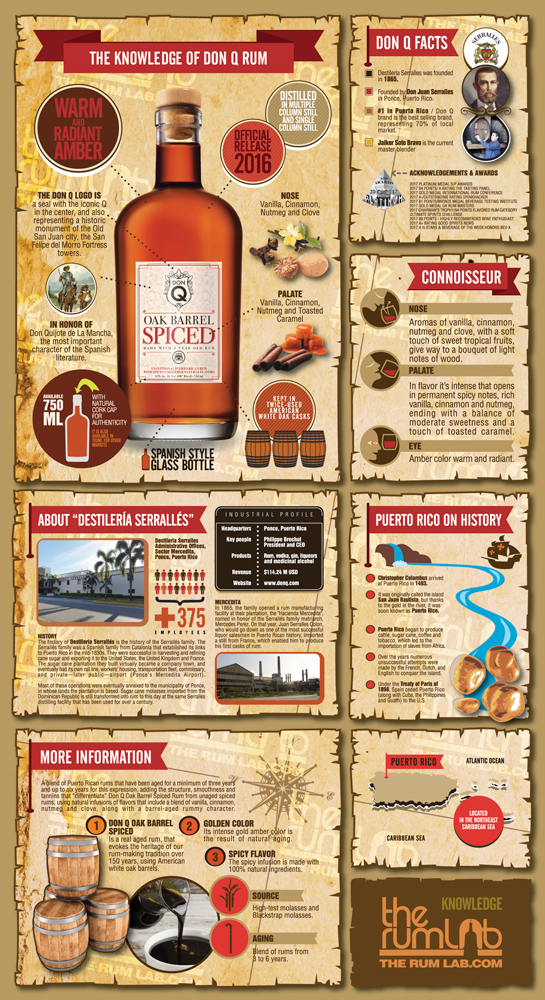Rum 101 – Part 1
Rum can be defined as alcohol that has been distilled from fermented sugar cane juice and its byproducts. It’s acceptable to use cane juice, cane syrup (miel), turbinado sugar, white sugar, molasses, and blackstrap molasses; each adds a distinctive flavor to the finished product. Rum is not alcohol made from other sugar sources like beet sugar molasses.
One of the main causes of the variety of flavors in the category is the fact that rum can be produced from any source that uses sugarcane as a foundation. Blackstrap molasses and freshly squeezed cane juice differ significantly from one another, therefore it stands to reason that their distillates would also differ significantly. The various flavors of rum are influenced by geography as well. Islands naturally produce information silos, and each one develops its own method of operation. The absence of consistent rules, however, is arguably the main cause of the variation.
Rum is defined as “spirits distilled from the fermented juice of sugar cane, sugar cane syrup, sugar cane molasses, or other sugarcane by-products at less than 95% alcohol by volume having the taste, aroma, and characteristics generally attributed to rum and bottled at not less than 40% alcohol by volume” by the United States Alcohol & Tobacco Tax and Trade Bureau (TTB).
Although it could appear a little prescriptive at first, there isn’t much to the requirements. No limitations on sourcing, aging in barrels, combining, filtration, or bottling. There are enough awful rums on the market to underscore the fact that this is a two-edged sword. Some rums have caramel or sugar added to them for color. However, there are others that are essentially spiced and flavoured rums that pass for aged or dark rum (and this is where things get sticky) and that is the crazy world of rum.
However, there is a movement underway to separate “genuine rum” from its tainted substitutes. The West Indies Rum and Spirits Association is one business organization advancing the agenda. Their “Authentic Caribbean Rum” brand is intended to draw consumers’ attention to a group of rum makers dedicated to making genuine rum without additions.
Fermentation
After selecting your sugar supply, selecting the right yeast is the next crucial step. The sugar will be “eaten” by the yeast, which will turn it into alcohol and carbon dioxide. The exact reaction will differ widely between different strains of yeast. While other distilleries openly welcome “wild” yeast into the fermentation tanks, some distilleries use strictly regulated procedures to guarantee this doesn’t happen. In the past, if fermentation didn’t start right away, people may add one or two dead animals to the tank (more likely a pit) to kickstart it.
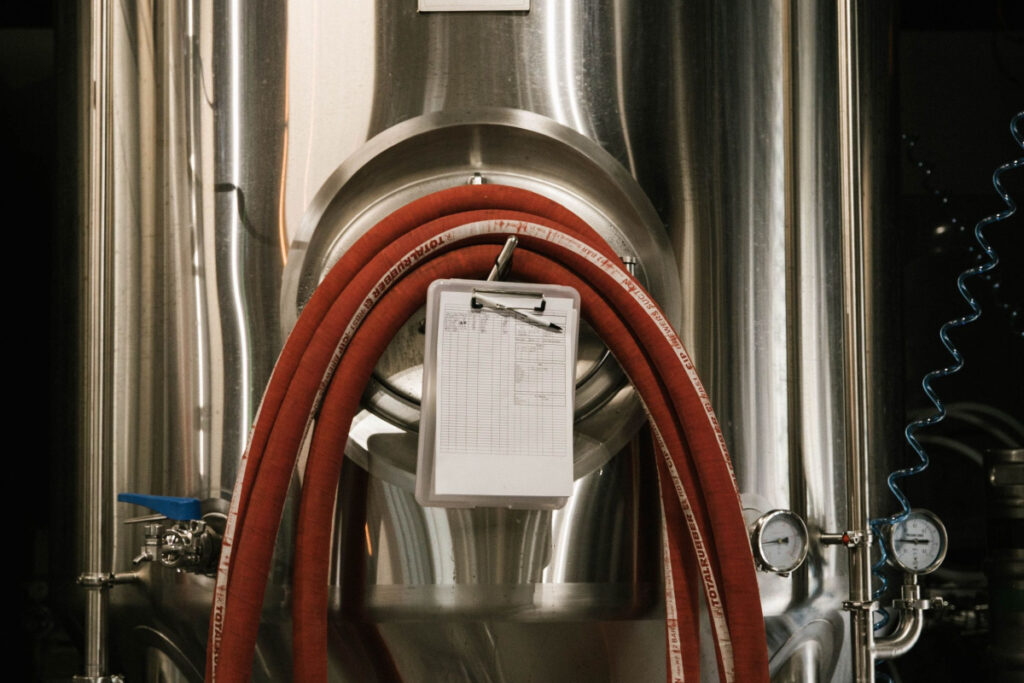
Rumor has it that some distilleries still employ dead bats (unlikely, but flying creatures might easily fall into the tank if they fly through a concentrated stream of CO2 coming off the fermenter), and it is well known that some distilleries use rotten fruit like jackfruit and bananas.
They contain the acids that transform into desirable congeners in the distillate and then link to form long chain esters in the barrel, which is why people add in these weird fermentable. Esters typically taste like fruit on the palate; consider bananas, apples, and pears. Others, meanwhile, have a slightly more floral flavor, like rosewater.
The length of fermentation will also depend on the yeast used. While normal yeasts can take a week or longer, “Turbo” yeasts can completely ferment all available sugars in as little as a day. This is due to the additional “food” that was given to the yeast, such as di-ammonium phosphate, which promotes alcohol synthesis while discouraging yeast reproduction. In order to boost yield and lessen stress on the yeast, which can lead to unpleasant odors, acids and bases can also be added to the solution to buffer it in one direction or the other depending on how far the yeast can go before killing off. The flavor potential of the rum to be produced often correlates with the length of fermenting period. A distillate will typically have some taste potential if the fermentation lasts three to five days; otherwise, a product with the consistency of vodka will be produced.
Distillation
After your sugars have fermented, you will have a product called a “wash.” It must be distilled because the wash often contains less than 10% alcohol and is more similar to a sugar wine than a rum. Back then, stills were simple open-flame heated boiling kettles. There are many different types of still designs available today, and each one yields a distillate with a distinctive flavor. In modern distilleries, steam is favored over open flames because it heats more uniformly, doesn’t scorch molasses, and is much simpler to control.
Pot stills and column stills are the two primary types of stills (column stills are also called patent or Coffey stills after their inventor Aeneas Coffey). In general, column stills make lighter bodied rums while pot stills generate more rums with a fuller flavor. A third kind of still, known as a “hybrid still,” combines pot and column still designs into a productive device that produces spirits with a higher alcohol content while preserving some of the flavor of the pot still.
Two retorts, sometimes known as doublers or thumpers, are typically used in Caribbean pot stills to boost the distillate’s potency. These are frequently filled with both low and high proof rum, which imparts a distinct flavor and character to the finished product.
You won’t attain your desired alcohol content after one pass through a straightforward pot still; hence, additional distillation is necessary to get the needed potency. Because column and hybrid stills may reuse the distillate without letting it out of the system, they are better able to produce alcohol at higher concentrations. High volume manufacturers choose column distillation because it is more productive, continuous, simple to automate, and produces a more potent distillate in larger volumes. Column distillation has the drawback of allowing fewer congeners to enter the finished product, which results in a lower-quality flavor than that of a pot still. The Foursquare Distillery in Barbados and the Demerara Distillers in Guyana are two excellent examples of how column stills can be set up to produce a full-flavored distillate if that is what is desired. As a result, the true distinction is between continuous high yield distillation and batch mode distillation, not between pot and column.
Alcohol starts to come off the still as the wash reaches temperature (this happens at about 74°C, but depends on how much water is in the wash). Where to make the “cuts” during distillation is one of the distiller’s most important decisions. The first liquid to exit the still after distillation is referred to as “heads.” The water is not potable since it contains methanol in the heads. Normally, they are kept for re-distillation, though occasionally they are sold off as solvent of an industrial quality.
The distiller starts gathering the “heart cut,” which will eventually become the portion we drink, once he can no longer detect the methanol (this is frequently done by still temperature, feel with the fingers, or simply by smell). The second undesired component, known as the “tails,” will eventually start to appear in the distillate. The tails are trickier than the heads in some ways because, despite the fact that they contain plenty of unsavory substances like propanol and fusel oils, they can also offer tasty flavors. Before making the final cut, the tails may be partially permitted to join the hearts in some instances while being fully eliminated in others. Others will finish the run by adding some of the tails back to the heart cut. Everything is up to the distiller.
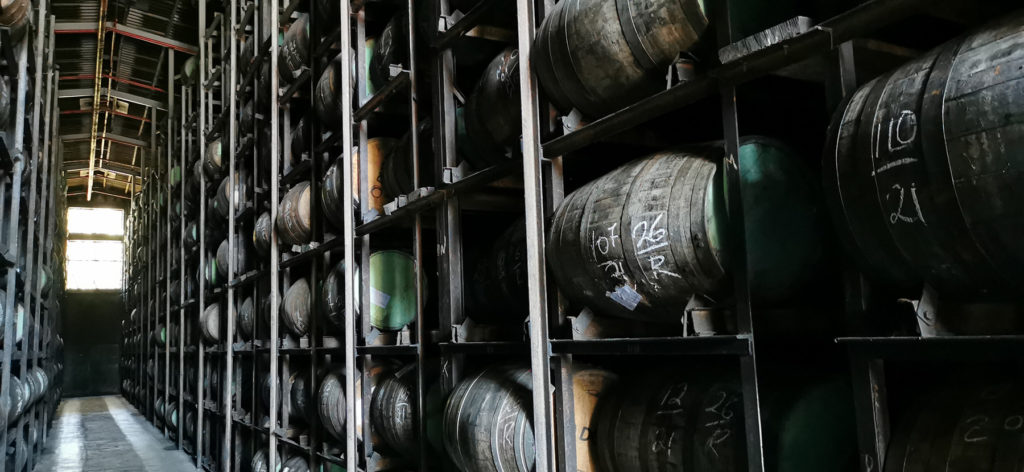
Aging & Blending
Some distillers will run the “new make” rum through a carbon (charcoal) filter after the distillation is finished to smoothen the flavor. Unwanted substances are chemically adsorbed on the carbon to achieve this. For a little period, some people will just let the rum lie in stainless steel. In order to establish a specific profile before age, the producer may choose to blend the rum with that of another still in the distillery rather than putting it directly into a barrel at this time. In any case, age is the following phase in the production process.
While freshly distilled rum has a distinct flavor of its own, the majority of aged rum derives as much or more of its flavor from the barrel in which it is matured. Due to the stringent regulations governing the production of Kentucky Bourbon, the majority of Caribbean rum is matured in old 53-gallon Bourbon barrels. Since only *new* charred white oak barrels may be used to age Kentucky Bourbon, there are a ton of gently used barrels available for rum aging.
There are several flavors that oak contributes. Literally, you could write a book about it—and some people have. We can argue that charred oak contributes a smoky, woody flavor at its most fundamental level. By going a little further, we can also say that burning the wood releases the lignins and tannins by fracturing the hemicellulose’s cellular structure. Vanillin from the wood is also where the distinctive vanilla flavor originates. Additionally, oak offers some sweetness in the form of its own wood sugars. the taste of caramelized toast? That is also derived from wood. Not to mention that the charred oak adds color.
The cooper is in charge of the barrels. In certain distilleries, the barrels may be purchased and used again right away, while in others, the barrel interior may be re-charred. Others may totally disassemble the barrels, re-char them, and then reassemble them to their preferences. Rum barrels, on the other hand, can be used as many times as the manufacturer likes.
Some smaller distilleries (particularly in the US) employ new American oak barrels in addition to used barrels to swiftly impart as much charred wood flavor as possible. More than anything else, these people are motivated by necessity because it is difficult to wait years until your product begins to sell. To enhance the surface area compared to the rum, many people who take this path also utilize barrels that are smaller than typical (25 gallons seems to be the sweet spot). Adding charred wood chips to a tank is an even faster way to add oak flavor, but barrel aging is still preferred.
Although there are some minimal age standards in different regions of the world, the length of time a rum is matured is up to the maker. For instance, rum must be matured in oak for a minimum of one year in Puerto Rico. Yes, you read that right. At least a year is spent maturing Bacardi Superior white rum in oak. (The color is then removed using a charcoal filtration process.) Venezuela requires a minimum aging of two years.
Rum ages much faster than Scotch or Cognac. Its location, not the spirit, is what’s to blame. Because most rum is produced in tropical regions, it is aged in hot, humid barrel houses all year round, which significantly accelerates the aging process. When the ambient temperature is higher, the wood releases its flavor more quickly. And because more moisture evaporates through the wood, the flavor of the liquid that is still inside is considerably stronger. The “Angel’s Share” is the portion of rum that rises to the heavens when it evaporates through the barrel. Although it can reach 11% in the first year, the typical evaporation rate in the Caribbean is between 6% and 7%.
Single barrel aging is the simplest simple aging protocol. This implies that you fill the barrel, wait for some time, then empty it and bottle it (usually with some water added to reach the desired alcohol percentage). However, a combination of barrels is more frequently used to create aged rum, which is where the blender comes into play.
The Master Distiller and Master Blender (or Maestro Ronero) may be the same person in small distilleries. They each represent a separate position in larger businesses. To create the required flavor profile, the blender must select and combine aged rums from the company’s stock. It is typically regarded as one of the most crucial positions one may hold in the rum industry.
Many people may mix old and young rums when creating a mixture. Stretching the aged stocks not only makes financial sense, but it also gives the blender a lot of freedom to create a specific flavor profile. There are several ways to combine the new and the old, including while the wine is still in the barrel, as is done in the Solera process. Simply put, the Solera process involves taking a piece from a barrel that contains one of the oldest rums and replacing it with a portion from another barrel that has one of the youngest rums. The elder portion is either bottled or placed in the next barrel in line. Although the Santa Teresa Bicentenario claims to have a trace amount of rum as old as eighty years in its final blend, this process is often done with four or five series of barrels at intervals of a year.
Rum may be transferred from one kind of barrel to another as part of the aging process. The process of “finishing” or “double-aging” involves moving liquor from Bourbon barrels to Sherry casks, frequently Pedro Ximenez [PX] barrels. The rum is given extra tastes by being aged in several barrels, which combine harmoniously to provide a flavor that is greater than the sum of its parts.
The majority of rhum agricole is aged in Cognac barrels, one of the several barrel “finishes.” The wood used to make cognac barrels makes them unique in addition to what they once held. American oak has a looser cellular structure than Limousin wood, which is typically used to make French barrels. As a result, French oak takes a little longer to release its various aromas and tends to have a flowery flavor that is absent from American oak.
It is well accepted that small amounts of coloring (often caramel) are added to the final blend to impart a color profile attractive to the bottler, despite the fact that many manufactures either disregard this or deny this in their literature and labeling. In other instances, the lax definition of rum allows blenders to add spices or fruit extracts to the mix to give a distinctive flavor profile. Purists deride this technique and contend that it renders these blends ineligible to be classified as rums at all.
Proofing and bottling are the last two processes in the rum production process. “Proofing” refers to blending pure water into the rum to increase its alcohol content to the desired level. That aim will most likely be 40%, which is both a business and a personal preference choice. At 65%, a cask strength rum won’t be enjoyed by everyone, while at 40%, you can sell a lot more rum. The taste is significantly impacted by the addition of water, and if done too rapidly, the esters that give the rum its characteristics may be harmed (saponification). When the rum reaches the desired ABV, it is bottled, packed, and transported to your preferred bar, eatery, or retail location.
Rum Classifications
There are at least four additional kinds of rum besides the basic “light, dark, and aged,” as we learn here:
- Light rum – This is rum that has been charcoal filtered to remove color before being bottled, either new-make rum or aged rum. Light rum blends beautifully with traditional drinks like the Daiquiri because it is crisp and clean. It can also serve as a rum introduction for those who often favor vodka. This type of rum is typically transparent, as the name suggests.
- Gold rum – Although it is typically aged, there is no set amount of time. Additionally, it was probably somewhat caramel-colored (some are indeed not aged at all). For blending with soft beverages like Coca-Cola or ginger ale, gold rum is made.
- Dark rum (also known as black rum) – Dark rum, which is frequently a blend of rums with significant amounts of caramel color or even molasses added, can be just about any age, although is typically relatively young. Other flavors are frequently blended into dark rums, but they are rarely mentioned. These rums are frequently added as floaters to tropical punches and utilized in tiki drinks.
- Overproof rum – This word refers to rum with a significantly high alcohol by volume (ABV). Most unaged, white rums that are overproof are white rums. The Jamaican overproof rum J Wray & Nephew overproof, which is bottled at 62% ABV, is one of the most well-liked overproof rums in the world. Other well-known overproof rums include the caramel-colored Lemon Hart 151 (75.5%) and Bacardi 151. Sunset Very Strong Rum, which has a BAB of 84.5%, is the strongest beverage ever produced (169 US proof).
- Rum with spices and flavors – Rums that are spiced and flavored are getting more and more well-liked all around the world. Due to the variety of flavors, they appeal to consumers as well as producers who are glad to sell more young rum. Adding flavors is less expensive than waiting in a barrel, after all. Spiced rum frequently includes flavors like sugar, vanilla, cinnamon, cardamom, and citrus peel. Although Chairman’s Reserve from Saint Lucia or Siesta Key from Florida are considerably better options than Captain Morgan Spiced Rum, which is the most popular brand in the world. Typically, flavored rum is fruit-flavored, with coconut being the most widely consumed. There are currently many different fruit flavors available, some of which work nicely in tropical highballs and cocktails. A little-known fact about most foods that have “natural flavors” added is that they almost invariably contain synthetic analogs that weren’t actually derived from the fruit. Rums with spices and flavors are typically bottled at lower ABV levels. Most spiced rum is bottled at 35%, whereas the most popular coconut rum is 21%. This attracts younger drinkers who might be switching from beer and wine to spirits, allowing the producer to sell more rum for less money and pay less tax.
- Aged Rum – In actuality, all rum (by volume, at least) is aged to some extent; nonetheless, when we refer to “aged rum” in this context, we mean rum that is intended to be sipped or used in the creation of premium cocktails. Most rum reviews center on aged rum. The Appleton 50 year old retails for roughly US$5000, albeit this is an extreme example. They are also typically the most costly.
- Rhum Agricole – The French West Indies mostly use freshly squeezed cane juice rather than molasses to make Agricole rum. Much of the grassy characteristics of the sugar cane are retained in the finished spirit. Rhum agricole is appropriately more expensive than molasses-based rums because there is no profit to be made from producing sugar and a very brief window of opportunity to manufacture the spirit (the cane starts losing sugar the instant it is picked). Martinique’s Agricole rums are strictly governed and subject to French AOC regulations that specify how they must be produced. Although Martinique is the origin of the most well-known rhums agricoles, you may also get delicious expressions from the neighboring Guadeloupe, which is not under AOC regulation and has some production process flexibility. Along with Haiti, other ex-French sugar colonies off the coast of Africa also produce agricole rum. Due to the style’s rising popularity, distillers outside of the French tradition are now making rums in the agricole style that are of the highest caliber. Richland Rum from Georgia, KoHana Rum from Hawaii, and St. George from California are a few examples. Typically, unaged agricole rum is served with a ‘Ti Punch (rhum, lime, and sugar). This is another method to savor aged agricole, but many are thought to be far too valuable to be consumed in any other way but straight up.
Rum Styles by Geography
Typically, rum styles are classified according to the colonizers. In general, former English and Spanish colonies utilize molasses to create their rum, while former French colonies typically use sugar cane juice. English-style rum is thicker and full-flavored, Spanish-style rum is light and dry, and French-style rum has a grassy flavor. Most commonplace rum educators stop at these three colonial delineations, but while practical, this system is grossly insufficient. One needs to dig deeper and drill down to the country level in order to truly comprehend rum styles. Let’s examine several rum-producing nations and gain some knowledge about their distinctive characteristics and leading brands.
Antigua
Antigua is a part of the Authentic Caribbean Rum trademark.The local rum of Antigua is known as Cavalier . The sole Antiguan rum available for export is produced by the same people and goes by the name of English Harbour. The Antiguan style is light and fruity, but it also has a distinct bottom end that wonderfully balances the flavors. The Authentic Caribbean Rum trademark includes Antigua.
Barbados
It’s said that rum making may have started in Barbados. The delicious and approachable medium-bodied Bajan style commonly combines rums from both column and pot stills. Mount Gay, Foursquare (the company behind Doorly’s, R.L. Seale, and The Real McCoy), and Cockspur are notable rums from Barbados. St. Nicholas Abbey Microdistillery is a newcomer to the industry. Plantation Rum’s WIRD (West Indies Rum Distillery) produces rum for well-known brands like Plantation Rum, Stades, and Cockspur.
Belize
Most people do not immediately think of Bellize as a rum-producing country, but Traveller’s Liquors would want to change that. One Barrel rum, a wonderful inexpensive rum that is light and slightly sweet, is produced by them. Although Tiburon rum is a higher end expression that can be sipped, this one is designed for blending.
Bermuda
Only 21 square miles and made of up volcanic rock, the islands of Bermuda have limited agricultural or manufacturing capabilities. However, the Gosling family has been bottling rum on Bermuda since the mid-19th century. They import a variety of rum distillates from the Caribbean and West Indies, aging and blending the rum in their Hamilton facility. Goslings’ rums are brought to proof by the introduction of Bermuda rainwater collected and filtered on site.
Colombia
Colombian rums are frequently smooth and sweet. Dictador is the brand that is the most widely available in the US. Dictador, known for their eye-catching black bottles, finishes with a pronounced nutty note. Ron Viejo de Caldas, Parce Rum, and Ron Medellin are more brands.
Costa Rica
Costa Rican rums are smooth drinkers made to please all types of rum drinkers, like other rums from the area. Brands like Centenario, which are smooth and sweet, are excellent starting places for people who Zacapa and Zaya have brought into the fold.
Cuba
Cuban rums are light-bodied and extremely sharp, much like Puerto Rican rum. They don’t necessarily lend themselves to prolonged age, as is the case with the majority of light-bodied rums (with negligible congeners in the rum, there are few acids and esters to recombine into new and interesting flavors). The most popular brand is Havana Club, which is promoted by Pernod-Ricard, a major French beverage company, but Ron Cubay and Ron Santiago de Cuba are also noteworthy. Other brands are Black Tear Rum and Ron Eminente.
Dominican Republic
The Dominican Republic, which makes up around two thirds of the island of Hispaniola, is the birthplace of several well-known rums, including Brugal and Barcelo. Most Dominican blends, with the exception of Brugal, tend to be sweeter (particularly Atlantico and Matusalem). Brugal advertises its rum as being dryer. Except for the sugar, the flavors are those of the Spanish style, which are mild and generally neutral but blend well in used Bourbon barrels. The Authentic Caribbean Rum trademark is a partnership between Brugal and Barcelo. Other rums are Punta Cana, Oliver and Presidente
Fiji
There is only one distillery in Fiji, and until recently none of its rums were shipped to the United States directly. Bounty Overproof Rum, a locally produced brand, is bottled at 58% ABV. Private brands from reputable boutique rum vendors like Berry Brothers and Rudd, Blackadder, and Duncan Taylor are nevertheless available. I’ve never met anyone who truly appreciated Fijian rum, therefore my theory on the subject is that these fine people are looking for an amazing Fijian vacation and buy a few barrels of rum to appease the tax man. The tasting comments frequently include paint thinner, therefore you should definitely test this type before buying.
Grenada
In Grenada, rum is produced by four different companies: Renegade, which has been around since 2021, Westerhall, Rivers Antoine, and Clarke’s Court, which was founded in 1937 and is housed under the Grenada Sugar Factory, the biggest on the island, and is named after an estate with the same name in the southern parish of St. George’s.
The raw flavor and bombast and attitude in Grenada Rums is enough to satiate the urge for something serious for the rum junkie, and ultimately, it’s really and shockingly wonderful. One can only hope that it receives greater international appreciation because it’s a deserving addition to the canon.
Guadeloupe
The home of fantastic rum varieties is located just over 100 miles north of Martinique. Guadeloupe’s rums are vibrant and thought-provoking, with notes of grass and dirt and a light roundness. Guadeloupe produces both molasses- and can juice-based rums, and frequently blends the two to produce a distinctive flavor that is not subject to the AOC regulations that apply to Martinique. In addition to other goods from companies like Bielle and Pere Labat, Damoiseau was recently made available in the United States.
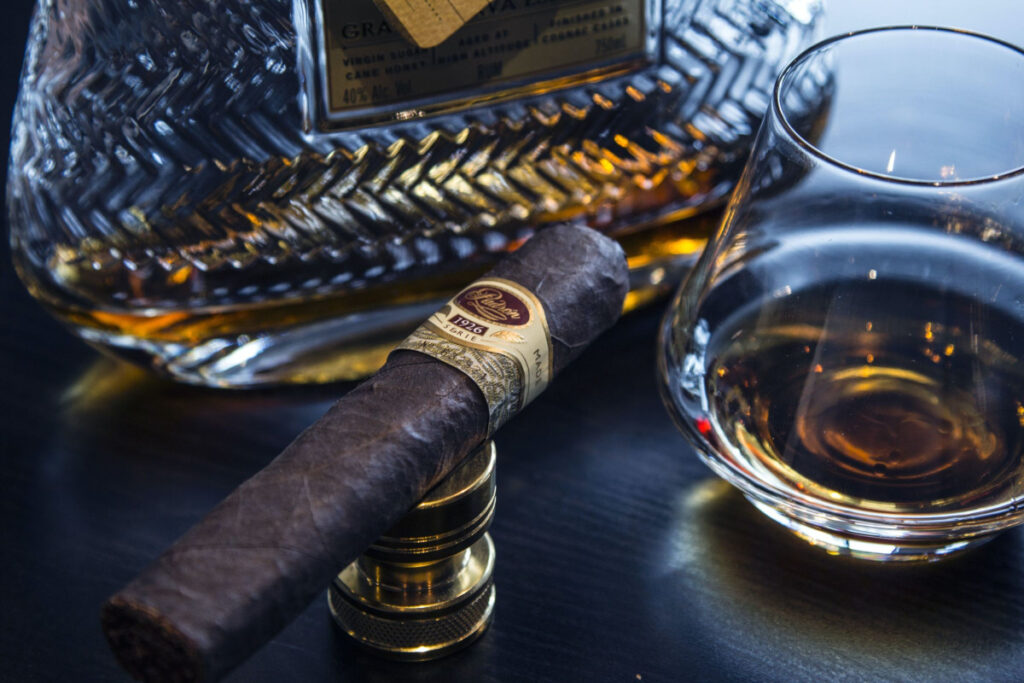
Guatemala
Zacapa is a rum made in Guatemala that is popular worldwide. Ron Botran, who is also from Guatemala, is a better example of the current trend. The solera blending method and a silky, sweet Sherry finish are features of the Guatemalan rum style. Ron Miracielo and Ron Venado are two further excellent rums from Guatemala.
Guyana
Demerara Distillers Limited, the company behind El Dorado Rum, is the only rum manufacturer in Guyana at the moment. The kind of still used determines the style of Guyanese rum, and DDL has many different types, including wooden pot and column stills. The rums produced by this operating museum are recognized for their deep, earthy bottom ends with a thread of recently churned butter laced through them. They are incredibly tasty. The Authentic Caribbean Rum trademark includes Guyana.
Haiti
Haiti has thousands of illegal distilleries that make Clairin, the local cane spirit. Barbancourt operates the only large-scale distillery on the island. Although the former French colony and the Dominican Republic share a border, their approach to rum are as dissimilar as their respective cultures. Barbancourt, an agricole-style rum made from cane juice, is rounder than rums from Martinique or Guadeloupe. One of the greatest prices for aged rum available today is Barbancourt’s 15-year expression, which costs just over $40 US. The Authentic Caribbean Rum trademark includes Barbancourt.
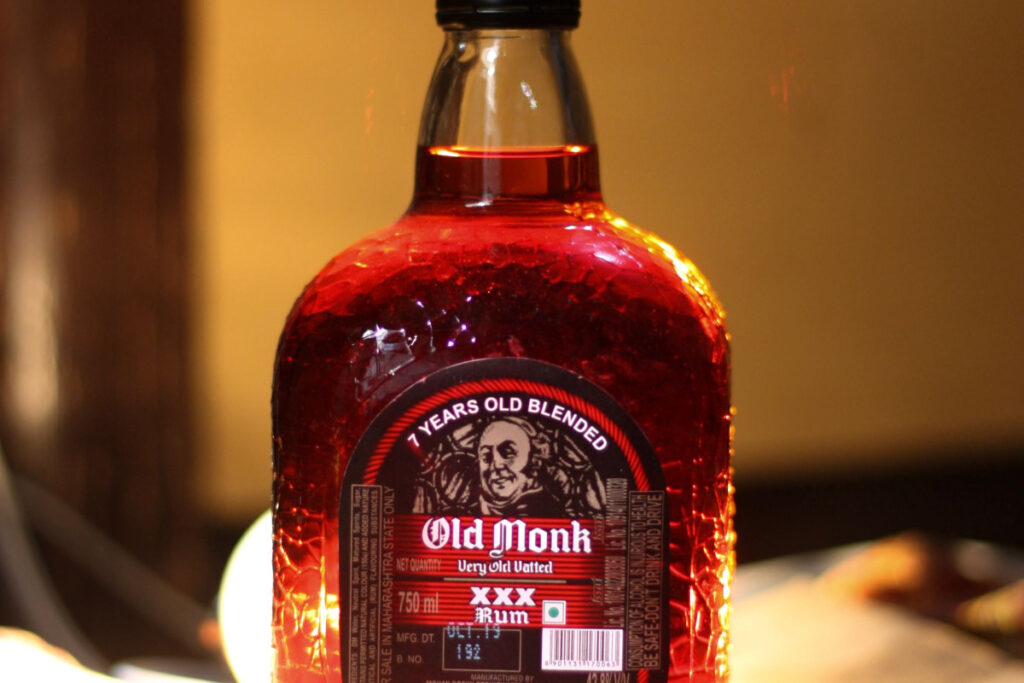
India
India is one of the biggest rum manufacturers in the world, yet many would argue that the rum they make is more like flavored vodka than true rum. The finished spirit is made from cane juice but is typically distilled to ethanol’s azeotropic limit. To make the ethanol resemble aged or dark rum, it is then aged (or not) and enhanced with a range of flavors and colors. The only brand you’re likely to find in the United States is Old Monk.
Jamaica
Jamaican rum exemplifies a delightfully distinct style that prioritizes flavor and is renowned for its distinctive “funk.” Open fermentation, the inclusion of leftovers from past distillation runs, and occasionally the presence of bacteria from a dunder or muck pit are the causes of the stench (bacteria-rich outdoor pits that contain backset from previous distillations). The pot stills concentrate the potent flavors that come from the prolonged fermentation, creating a fruity, earthy distillate that can almost be unctuous. J. Wray and Nephew White Overproof Rum, which is bottled at 63%, is the most popular item on the island. Currently owned by Gruppo Campari, Appleton Estate is the most well-known brand outside of Jamaica. Be on the lookout for Jamaican private labels from The Funk, Mezan, Hamilton, and Cadenhead’s as well as emerging brands like Rum Fire from Hampden Estate. The Authentic Caribbean Rum trademark includes Jamaica.
Martinique
The use of cane juice and the AOC are the two main characteristics that set Martinique’s rums apart from others. The French version of the Protected Designation of Origin (PDO) used by the European Union is called Appellation d’Origine Contrôlée (AOC) (PDO). The AOC specifies the procedures for planting, growing, harvesting, crushing, fermenting, distilling, and aging cane. Because of this, many rum (or rhum, depending on the situation) enthusiasts consider this to be the purest form of cane spirits. One may assume that because of the regulations, all Martiniquan rhums would taste the same, but that is undoubtedly not the case. Others are far more accessible with notes of tobacco and leather, while some have harsh turpene-like scents and rubbery flavors. Rhum J.M and Clement are the two rhums agricoles that are sold the most in the United States, although there are many others as well, such as Saint James, Neisson, Trois Rivieres, and La Mauny. These rhums are frequently very intriguing to those who are transitioning from the Scotch world to cane spirits.
Mauritius
In Mauritius, sugar cane has existed since the first half of the fourteenth century. Dutch farmers first started growing cane to make arak, but it wasn’t until the French and English took over that cane farming really took off. It should be emphasized that Mauritius has developed into a producer of rum in all styles, including classic molasses, agricole, and spiced, as a result of its many influences. The success of the island is attributed to emblematic houses like Chamarel, New Grove, Saint Aubin, Labourdonnais, or Emperor. The Mauritian rum business has been expanding since the 2010s, and its aura is reflected in both an extraordinary rise in domestic production (almost 180% since the decade’s start) and an increasing importance of exports.
Mexico
Mexico produces more cane spirit than agave, despite the fact that it is much more renowned for its agave spirits. However, a lot of it is used to make those subpar mixto Tequilas that gave you such awful hangovers in college. Following those precious stones is Bacardi, which produces a handful of its expressions there, including Bacardi Black. These rums are virtually identical to their Puerto Rican counterparts. The only other Mexican rum that is commonly sold in the United States is Mocambo, which is aged in unusual woods and has an unusual flavor. Around the world, emerging brands include Uruapan Charanda, Paranubes, Deadhead Rum, and Bonampak.
Nicaragua
Compañia Licorera de Nicaragua, the producer of Ron Flor de Caña, is based in Nicaragua. The rums resemble Cuban rums in that they are crisp and dry. It was one of the first spirits in the world to receive Fair Trade certification in 2018.”
Panama
The majority of Panama’s rum is produced by two distilleries: Destileria Don José and Ingenio San Carlos. The former produces Ron Abuelo for Hermanos Varela, while the latter, run by Don Pancho Fernandez, produces a range of brands. Another product of the Spanish tradition, Panamanian rum has a medium body, is clean and crisp, and has a little taste of caramel sweetness.
Peru
The excellent Cartavio rums from Destilerias Unidas may be changing the perception that Peru is more recognized for its rum than for its wine and Pisco. The Spanish-style rums are aged with rich flavor and complexity in both straight and solera styles. There is something in the line for everyone.
Philippines
Like India, the Philippines is noteworthy because to the quantity of goods produced there. The primary brand, Tanduay, recently introduced an export label in the United States, which is a vast improvement over their domestic goods. According to many industry insiders, Tanduay is similar to Old Monk in that it is flavored, bottled, and created from neutral alcohol. Don Papa Small Batch Rum is another Filipino company that has made a name for itself as a top player in the premium rum market.
Puerto Rico
Rums prepared in the Spanish style that are dry, crisp, and light-bodied are popular in Puerto Rico. Although Don Q and Ron Palo Viejo from Destileria Serralles are the most well-known brand in Puerto Rico, Bacardi is undoubtedly the biggest volume manufacturer. Before being bottled and marketed, continuous column-distilled rum must mature for at least a year. Thus, to get rid of color and congeners, all light Puerto Rican rums have gone through charcoal filtration. The market is being expanded by new businesses as Club Caribe, Destileria Coqui, La Destileria, Crab Island Rum Distillery, and San Juan Artisan Distillers.
Saint Croix
Cruzan Rum, a brand owned by Beam-Suntory, has long been produced on Saint Croix in the U.S. Virgin Islands. More recently, a distillery for the production of Captain Morgan rum was constructed there by the UK-based global beverages company Diageo. From a taste perspective, Captain Morgan isn’t really worth mentioning, but Cruzan is a respectable rum that, despite the island’s Dutch heritage, is more in the vein of a Spanish-style rum. Compared to Puerto Rican rums, it has a little bit more body, and the single barrel expression is actually rather excellent.
Saint Lucia
Saint Lucia Distillers, the company that produces Chairman’s Reserve rum, is based there. The Chairman’s line manages to keep a fascinating profile while attenuating the punchy notes that would turn off the ordinary rum drinker. Untouched Saint Lucian rum is fairly funky and full of phenolics (try one of Ed Hamilton’s rums for reference). The 1931 anniversary blends (a new one is released each year) are outstanding, and the “Forgotten Casks” edition is lovely and a little bit woodier. A member of the Authentic Caribbean Rum trademark is Saint Lucia.
Saint Vincent
The native overproof rum from Saint Vincent is simply known as “Sunset Very Strong Rum,” and it is bottled at an astounding 84.5% ABV. The Captain Bligh XO rum, which is actually quite a lovely fuller bodied rum prepared in the English style, is produced by the same company (Saint Vincent Distillers). Due to trademark concerns with Captain Morgan, this one is marketed as “Mutineer’s Gold” in the United States.
Trinidad
Caroni’s and 10 Cane’s closure has left Trinidad with just Angostura as its sole distillery. Since the early 20th century, the producer of the namesake cocktail bitters has been producing its own rum, and in 1964, rum sales finally surpassed those of the bitters. The column-distilled rum in the Trinidadian style has a medium body. The Angostura line includes a wide selection of options, ranging from white through 12 years and beyond. The Authentic Caribbean Rum brand includes Trinidad.
United States
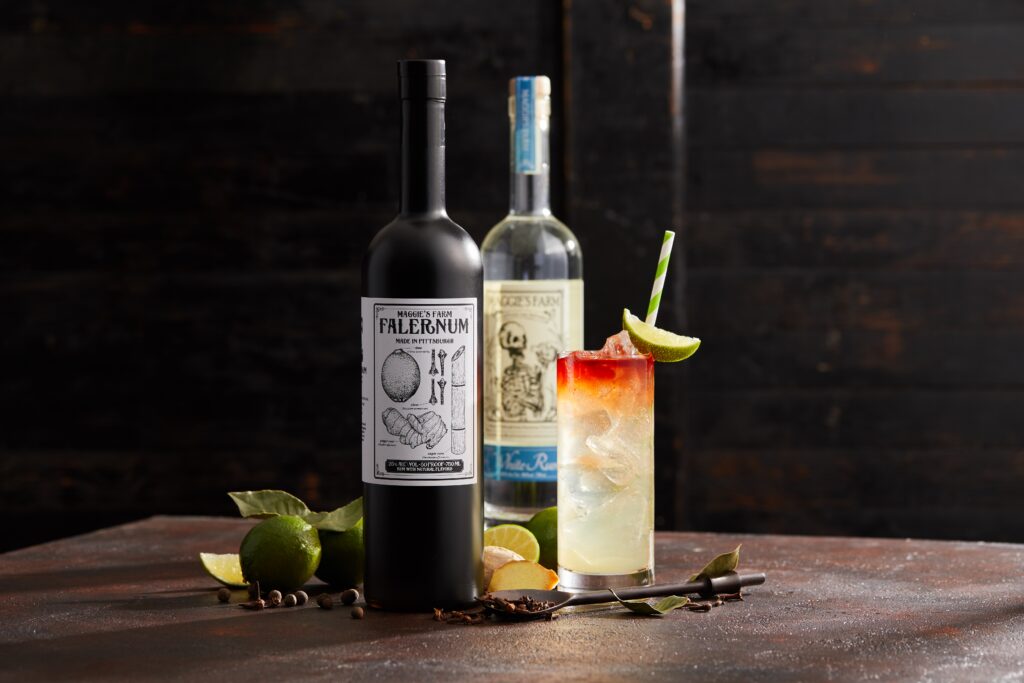
Since most American rum is produced in tiny batches by artisan distilleries, it resists generalization. There are rums of every kind from all around the nation, including agricole type rums from California and Hawaii, Colonial style rums from Massachusetts, and many more.
Venezuela
Rums like Santa Teresa, Ron Carupano, Ron Pampero and Diplomatico are popular in Venezuela and globally. These rums have a concentration on smoothness and a preference for sweetness, akin to rums from Guatemala or Costa Rica.
